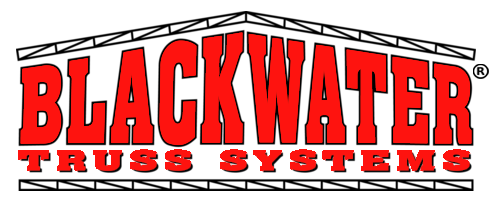Square Tube vs. Angle
A practical buyer’s guide from Blackwater Truss Systems
Quick Take
If you’re building a pole barn and weighing square tube against angle iron trusses, here’s the short version:
- Best overall performance: Square tube trusses offer superior torsional rigidity, higher resistance to eccentric loads, and a clean architectural look.
- When angle iron works: For lower upfront cost and simple agricultural storage buildings where appearance and torsion resistance are less critical.
Bottom line: For customers who value strength, durability, and appearance, square tube trusses are often the premium choice.
Why Square Tube Provides Structural Advantages
Torsional rigidity
Square tube members resist twisting better than angles, making them ideal for spans subject to lateral or out‑of‑plane forces.
Eccentric loads
When dealing with equipment hung from trusses, heavy fans, or other point loads, tube designs distribute forces more evenly and with less risk of local buckling.
Uniform strength in multiple directions
Unlike angles, which concentrate strength along certain axes, square tubes provide balanced structural resistance in both principal directions.
Enhanced bracing capacity
Because of their stiffness, tube trusses may allow wider purlin bracing spacing in engineered designs, helping streamline installation.
Appearance & Finish
Clean architectural lines
Square tube trusses offer a smooth, uniform profile with no open edges or protruding flanges, giving buildings a more refined appearance.
Professional look for exposed structures
Where trusses remain visible—such as in shops, horse barns, or event spaces—square tube delivers a clean, modern aesthetic.
Primer protection
At Blackwater Truss Systems, all square tube trusses receive a solid coat of primer to protect the steel and provide a consistent finish.
Durability & Maintenance
Internal protection
When properly fabricated, square tubes offer sealed strength against the elements. Unlike open angles, their closed profile reduces exposed edges that can collect debris or moisture.
Resistance to damage
Tubes are less prone to local bending or deformation from incidental impact compared to angle flanges.
Low-maintenance finish
Their continuous, smooth surfaces are easier to clean and maintain for long‑term appearance.
Cost-of-Ownership Advantages (Square Tube)
- Superior long-term durability under challenging loads and exposure.
- Reduced risk of local buckling under eccentric loads.
- Cleaner finish for buildings where aesthetics matter.
- Potential design efficiencies with fewer bracing requirements.
Where Angle Iron May Be Preferred
Angle iron trusses still offer value for projects driven by lowest upfront cost, straightforward agricultural storage use, or where aesthetics and torsional performance are less of a concern.
Example Comparison (Typical Pole Barn Roof Truss)
In most cases involving visible interiors, mechanical loads, or architectural considerations:
- Strength: Square tube provides superior torsional and multi‑axis resistance.
- Appearance: Square tube looks cleaner and more professional in exposed environments.
- Durability: With primer protection, square tube offers excellent long‑term service.
- Erection: Tube members may streamline bracing and connection details depending on design.
- Cost: Angle iron remains less expensive, but the investment in square tube often pays off in longevity and appearance.
What You Get with Blackwater Truss Systems
- Stamped engineering for your jurisdiction (if purchased)
- Material certifications and clear spec sheets
- A solid coat of primer applied to all square tube trusses for long-lasting protection
- Standard connection details for posts, purlins, and bracing
- Responsive lead times and coordinated delivery
Where do you want to go?
-
-
-
Our Products
All Products PageReady to make a purchase? Click here to be brought to our Products Page.
